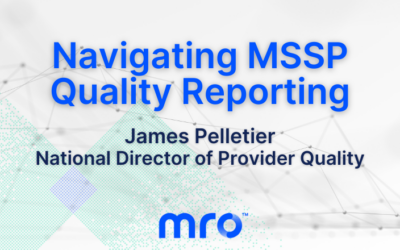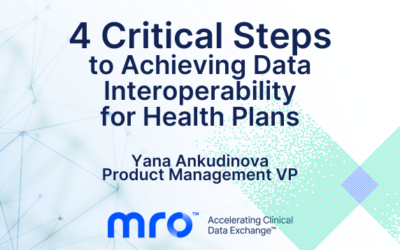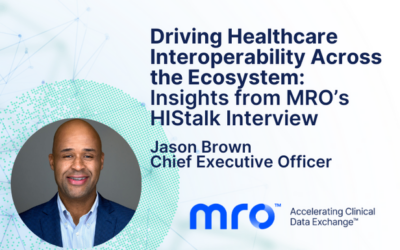The HIMSS Global Health Conference and Exhibit returned in full force to Chicago’s McCormick Place Convention Center during April 2023. Our team attended, presented, and exhibited at the event along with over 35,000 attendees and 1,200 healthcare technology companies. Interoperability and partnerships were two common themes throughout the exhibit hall, during educational sessions, and across a wide variety of industry meetings hosted by MRO.
After decades of pontification about interoperability, I was pleased to participate in multiple conversations focused on progress. We’ve thankfully moved past “we need to be interoperable” aspirations to more pragmatic and real-world “here is how we’re making it work” results. Sessions centered on the practical use of information in care settings and how to better leverage and apply existing tools to improve workflow and patient care.
Interoperability Moves to Practical Use
For MRO, the positive proof of interoperability’s advancement is reflected in our successful electronic clinical data exchange between providers and payers. By improving interoperability and data sharing between these two stakeholders, MRO reduces delays, duplication, and administrative burdens for both sides of the healthcare reimbursement and quality equation.
Our own Chief Innovation Officer, Sanket Baralay, gave an interoperability-based presentation titled Facilitating Seamless Clinical Data Exchange for Optimal Data Usability. The focus of this session was how to improve specific clinical data exchange use cases via interoperability tools, real-world experience, and industry standards. MRO’s scalable platform supports variability in size and scale for all clinical data use cases—an important capability as interoperability expands across the entire healthcare ecosystem.
The relationship between payers and providers is among the more challenging health intersections in patient data exchange and interoperability. Providers receive repeated requests for the same information from payers and health plans, causing duplicative work. Providers don’t want to overshare by granting ubiquitous access to their EHRs, but payers often need the extra information to properly process a claim. There are decades of fatigue on both sides.
A Look at the Facts
The facts of the matter are clear. Payers and providers need each other. They must work together. And the relationship is complicated. The overall sense at HIMSS23 was that now is the time to shift our focus away from problems and toward new ideas centered on practical (and doable) solutions that include renewed attention on data integrity.
Data Integrity Re-emerges as Top Task
Another topic at HIMSS23 was data integrity, especially as information continues to be electronically exchanged and shared. Garbage in our systems results in poor information quality for backend functions and continuing care. A renewed focus on data integrity is necessary as more data floods our networks in the year ahead through Quality Health Information Networks (QHINs).
We were given the opportunity to speak about this important topic with media and analysts, especially in relation to HITRUST, TEFCA, and the QHINs. Rita Bowen, our Vice President of Privacy, Compliance and HIM Policy, held several high-level discussions with other members of The Sequoia Project about the economics of QHINs, how they will work in the real world, and when we’ll start to see their value. Rita’s position on the Sequoia board of directors reiterates MRO’s commitment to interoperability, clinical data exchange, and ensuring data integrity every step of the way.
It’s inspiring to look back on these discussions and presentations after the conference. The energy and information brought home will invigorate all of us at MRO to continue innovating for our customers while taking the lead in safe and efficient clinical data exchange. The MRO team is excited for what comes next, and I can’t wait to be a part of it all!


